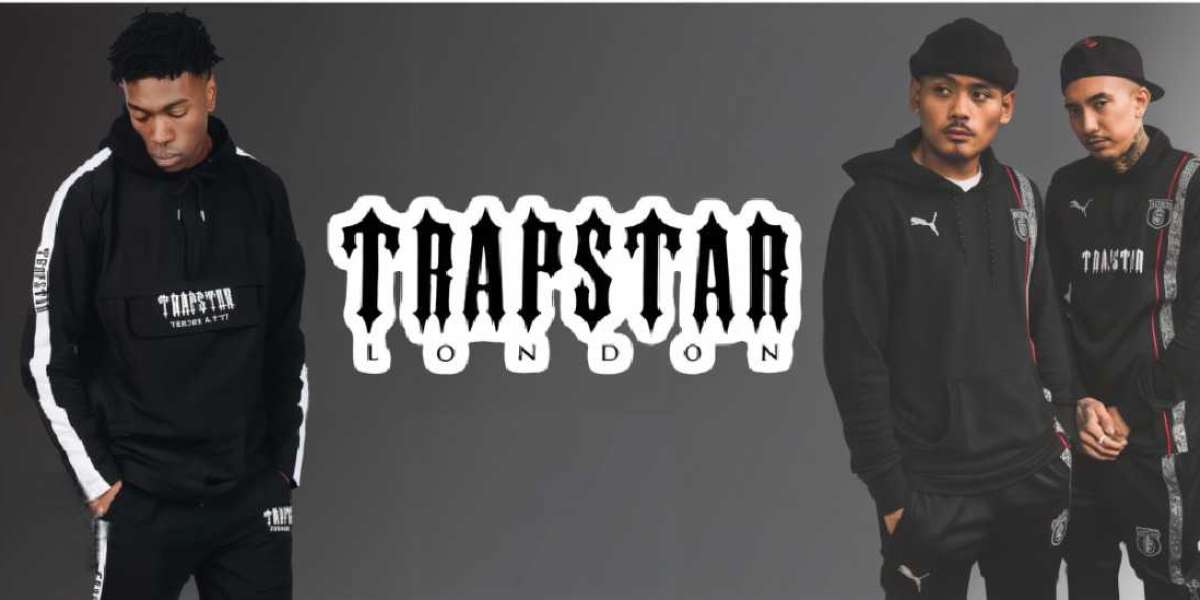In the crowded world of streetwear, where brands come and go like trends on social media, Trapstar stands as a rare, enduring force. It's more than just clothes; it's a way of life, a statement for the streets, and an example of tenacity. What began as an underground passion project in West London is now a globally recognized brand with a loyal following. Not only did Trapstar appear, but it completely changed the game.
How It All Started:
Back in 2005, three childhood friends—Mike, Lee, and Will—set out to create something that spoke to their experiences and dreams. Growing up in urban London, they were surrounded by the raw energy of street culture: music, art, and an unspoken determination to make it out of the system. From this world, Trapstar was born.
The name is as layered as the brand itself. The hardships of city life, the grind, and the sense of confinement are all reflected in "Trap." “Star” symbolizes breaking free and rising above those challenges. Together, it tells a story of ambition and duality—where struggle meets style, and resilience meets creativity.
The founders started small, printing custom T-shirts in their homes and selling them to friends and locals. But these weren’t just clothes—they were conversations. With cryptic phrases, bold graphics, and a touch of mystery, Trapstar’s designs intrigued people. It wasn’t long before the streets were buzzing with the question: What’s Trapstar?
The Secret Sauce (A Design Philosophy That Hits Different):
Trapstar’s mantra, “It’s a Secret,” isn’t just a slogan; it’s a philosophy. The brand thrives on intrigue, creating designs that are both relatable and enigmatic. Unlike traditional streetwear, Trapstar doesn’t rely on loud logos or flashy slogans. Instead, it uses subtle storytelling, layering meaning into every piece.
Their signature aesthetic is bold and unapologetic—dark tones, oversized fits, and graphics that feel like they’re speaking directly to you. A hoodie isn’t just a hoodie when it’s from Trapstar; it’s an attitude, a statement, and a vibe all at once.
What truly sets the brand apart is its ability to connect emotionally. Whether it’s the gritty realism of its graphics or the quiet confidence of its slogans, Trapstar resonates with those who know what it means to hustle, dream, and defy the odds.
From London’s Streets to Global Stardom:
Trapstar didn’t become an overnight success. Its rise was organic, fueled by authenticity and word of mouth. Early fans included London’s underground tastemakers, who were drawn to the brand’s raw energy. But what truly launched Trapstar into the global spotlight was its connection with celebrities.
Rihanna, Jay-Z, and A$AP Rocky weren’t just fans—they were walking endorsements. Jay-Z’s support was particularly pivotal; his affiliation with the brand led to Trapstar joining the Roc Nation family. This wasn’t just a business move—it was a validation of Trapstar’s cultural relevance.
But Trapstar didn’t stop there. The founders leveraged these connections to create a buzz that extended beyond the streets of London. Their pieces became coveted items, not just because of their designs but because of what they represented: the grit of the grind and the glory of breaking through.
Collaborations That Shook the Industry:
Trapstar has mastered the art of collaboration, and not in the predictable, cookie-cutter way many brands do. Each partnership feels like a cultural moment.
Take their work with PUMA, for example. Instead of churning out generic co-branded items, Trapstar brought its unique edge to Puma’s designs, creating sneakers and apparel that felt fresh and exciting. These weren’t just products—they were drops that fans scrambled to get their hands on.
Another standout moment was their collaboration with Netflix’s Top Boy. Trapstar created exclusive merchandise inspired by the series, blurring the lines between fashion and storytelling. The collaboration wasn’t just about clothes—it was about celebrating the culture that inspired both the show and the brand.
Staying Cool While Going Global:
One of the hardest things for a streetwear brand to do is scale up without losing its core identity. Trapstar has managed to do just that. Despite its massive success, the brand has kept its underground roots intact.
A big part of this is their drop culture. Instead of flooding the market with endless inventory, Trapstar releases limited collections, keeping demand high and fans excited. Every drop feels like an event, a moment that connects the brand with its community.
Social media has been another key to Trapstar’s global appeal. Platforms like Instagram have helped the brand maintain its cool factor, showcasing its designs in ways that feel aspirational yet relatable.
Overcoming Challenges:
Success isn’t without its challenges. As Trapstar’s popularity grew, so did the counterfeit market. Fake products started appearing, threatening the brand’s authenticity. But instead of backing down, Trapstar doubled down, introducing measures like QR codes and holographic tags to ensure that fans could spot the real deal.
The brand has also faced criticism from some corners of the streetwear world, with purists claiming it’s become “too mainstream.” But Trapstar’s founders don’t see success as a sellout move. For them, growing the brand is about spreading their message to more people, not diluting it.
What’s Next for Trapstar?
The future is wide open for Trapstar. With a loyal fanbase and a track record of innovation, the brand is poised to keep pushing boundaries. There’s talk of ventures into sustainability, a move that would align with the values of a younger, eco-conscious audience.
Digital fashion is another frontier. From NFTs to virtual collections, Trapstar has the potential to redefine streetwear in the digital age.
Why Trapstar Matters:
Trapstar isn’t just about clothes—it’s about identity. It’s for anyone who’s ever felt stuck but kept pushing forward. It’s for dreamers, hustlers, and creators who refuse to settle.














